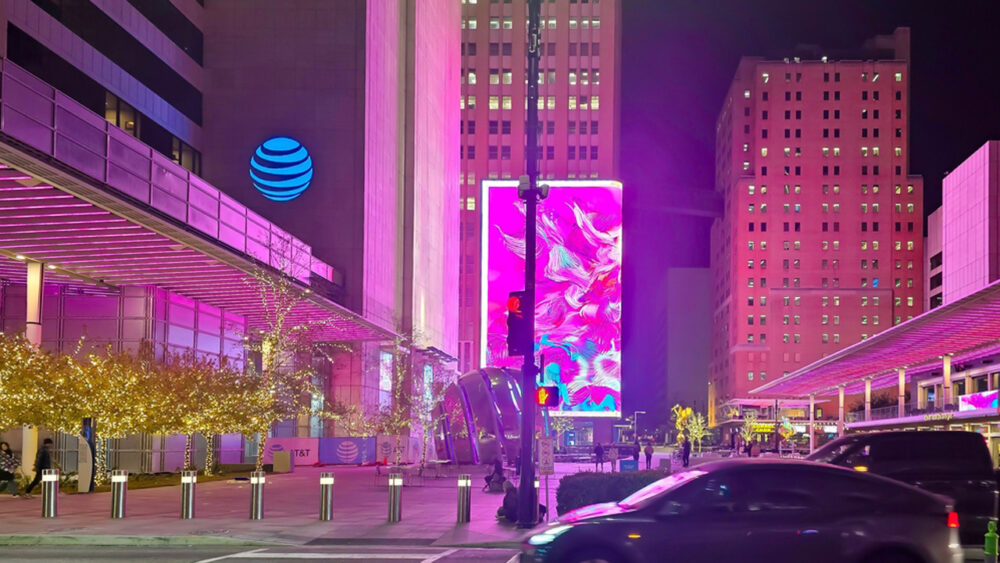AT&T continues to refuse to clarify whether it plans to stay in downtown Dallas — a silence that’s beginning to echo the company’s abrupt departure from San Antonio 17 years ago. The Dallas Business Journal recently reported that AT&T executives have toured large suburban campuses, including Plano’s Park at Legacy, while city officials scramble to convince the company to remain downtown.
The telecommunications giant has repeatedly declined to reaffirm that its Whitacre Tower headquarters will remain downtown beyond the current lease, as The Dallas Express previously reported. Sources familiar with the matter say executives have quietly toured suburban campuses, including the 1.8-million-square-foot Park at Legacy in Plano, and that a relocation is increasingly likely.
That same pattern has played out in San Antonio. Earlier this year, the San Antonio Express-News reported that AT&T will vacate one of its last remaining downtown properties — a 400,000-square-foot office on St. Mary’s Street — as it relocates operations to a suburban complex on the city’s West Side. The departure, described as another blow to San Antonio’s struggling downtown office market, underscores how completely the company has shifted away from the urban cores it once called home.
AT&T’s communications team did not respond to new questions from The Dallas Express about whether Dallas should expect a surprise similar to the one that stunned San Antonio in 2008, when local leaders were blindsided by the company’s headquarters move. “We do not comment on rumors and speculation,” a spokesman said in September, with the team offering no further comment when pressed this week.
That earlier move — which uprooted 700 executives and corporate support staff from San Antonio’s West Houston Street to downtown Dallas — “stunned local business and government leaders,” the Houston Chronicle reported at the time.
Bexar County Judge Nelson Wolff said then, “There was no inkling… Everybody is just shocked, just like me.” Local business leaders called the loss devastating, describing it as a triple hit to jobs, leadership, and civic identity.
AT&T leadership cited transportation challenges and limited direct flights from San Antonio as key factors, telling local officials that “San Antonio is a wonderful city, but it can be a difficult place to get to and fly out of.”
In a later 2021 San Antonio Express-News column, current AT&T CEO John Stankey reflected on that decision, recalling that he and his boss at the time “chuckled” because they already knew “where this is going to end … We say we need to put the headquarters of this company in Dallas.”
Stankey described Dallas as “a great place to do business because the business community is incredibly supportive of each other in this city.” He was president and CEO of AT&T Operations at the time.
Seventeen years later, that same Dallas community is now wondering whether the company’s praise has worn thin. A 2011 Express-News retrospective described AT&T as “fickle,” calling its departure a wake-up call about corporate loyalty that local leaders failed to heed.
A Boston Consulting Group (BCG) report commissioned by Downtown Dallas Inc. (DDI) warned that downtown’s growing crime and disorder could push major employers such as AT&T to leave.
The analysis projected a potential 30% decline in property values — roughly $2.7 billion — and an annual property tax loss of $62 million if corporate anchors were to relocate.
Despite that warning, AT&T has not commented on whether it supported recent state bills that would have increased funding for Downtown Dallas Inc. and expanded resources for public safety and cleanliness.
The proposed legislation, backed by business and civic leaders, aimed to channel more money into downtown improvement efforts but ultimately stalled in committee earlier this year.
AT&T, a board-level member of DDI, has stayed silent about whether those warnings factor into its decisions. The company has not publicly commented on whether concerns over public safety, vandalism, and copper thefts — issues it has acknowledged in other contexts — have influenced its long-term plans for Whitacre Tower.
The stakes are high. AT&T is one of downtown’s most visible employers and civic anchors, employing thousands of workers at Whitacre Tower and investing $100 million in the surrounding Discovery District, which Stankey once described as a brick-and-mortar recruitment tool.
Despite benefiting from local tax incentives and decades of city-backed infrastructure, AT&T has remained largely absent from downtown’s revitalization efforts — a silence that has not gone unnoticed among Dallas business and civic leaders.
The parallels to San Antonio’s experience are difficult for observers to ignore. When AT&T left that city, it was seen as a “vote of no confidence in the city’s ability to harbor a world-class corporation,” as Express-News columnist Greg Jefferson wrote.
In that 2021 column, Jefferson noted how AT&T’s $100 million investment in its Dallas Discovery District symbolized a company that had fully shifted its loyalty north — leaving San Antonio to absorb the civic and economic fallout.
That move was driven by transportation and infrastructure issues. Now, Dallas faces its own vulnerabilities — from crime to cleanliness — that could similarly undermine corporate confidence in the urban core.
Neither Stankey nor Kimberly has responded to The Dallas Express’s latest questions about whether the CEO still sees Dallas as the recruitment advantage he once did, or whether the city could again be caught off guard. The Dallas Business Journal recently described downtown stakeholders as “holding their collective breath” as AT&T weighs its options — a sentiment that underscores how much the city now stands to lose.
If history is any guide, Dallas may want to brace itself.


